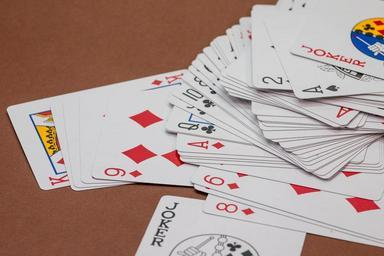1. Independent Evens
2. Independent Events Probability
3. Independent Probability Examples
The probability of independent events formula is used when we consider the probability of outcomes that are classed as “Independent” events.
Independent Events
In probability, events are independent of one another if the outcome of one of the events is NOT affected by the outcome of any of the other events.
So if we have 2 different events, A and B,
The events are independent if the outcome of event A does NOT affect the outcome of event B, and vice versa.
Probability of Independent Events Formula
When attempting to find the probability of Independent events happening together, we multiply each individual probability together.
With notation for probability, we can see the probability of independent events formula in case of two events.
Example
(1.1)
We can consider the case of rolling a dice twice.
Both rolls are independent of each other, the result of the first roll doesn’t affect the result of the second roll.
On the first roll of the dice, the probability of landing a 3 is \bf{\frac{1}{6}}.
On the second roll of the dice, the probability of landing a 3 is also \bf{\frac{1}{6}}.
So for the probability of landing two 3‘s from two rolls of a standard dice.
It’s not overly likely that two 3‘s would be rolled in a row.
More than 2 Rolls of the Dice?
What if we wanted to know the probability of rolling a 3 four times in a row instead of two?
We multiply the four probabilities together.
We see that this is extremely unlikely to happen, you’d expect to have to roll a dice over 1’200 times to obtain a sequence of four 3‘s in a row.
Rolling five 3‘s is considerably more unlikely to occur. \bf{\frac{1}{6}} × \bf{\frac{1}{6}} × \bf{\frac{1}{6}} × \bf{\frac{1}{6}} × \bf{\frac{1}{6}} = \bf{\frac{1}{7776}}
However the main point to focus on is, even if four 3‘s in a row have already been rolled.
The probability of a 3 on the fifth roll is still \bf{\frac{1}{6}}.
Because the previous four dice rolls were Independent of the fifth roll, regardless of what the outcome of each roll was.
Independent Probability Examples
(2.1)
If we were to flip a coin 3 times in a row.
What is the probability of landing 3 heads in a row?
Solution
P( Three Heads ) = P( Head ) × P( Head ) × P( Head ) = \bf{\frac{1}{2}} × \bf{\frac{1}{2}} × \bf{\frac{1}{2}} = \bf{\frac{1}{8}} = 0.125
A probability of 12.5%.
(2.2)

Picking a single card from a standard deck of 52 cards.
What is the probability of picking out a card that is a Spade, as well as a Face card?
Although we are picking just 1 card from a 52 card deck.
Picking a Spade card, and picking a Face card, are still separate events that are Independent of each other.
So we can use the same approach to find the probability of picking out 1 card, that is both a Face card and Spade card.
P( Spade ) = \bf{\frac{13}{52}} , P( Face card ) = \bf{\frac{12}{52}} = \bf{\frac{3}{13}}
P( Spade & Face card ) = \bf{\frac{13}{52}} × \bf{\frac{3}{13}} = \bf{\frac{39}{676}} = 0.058
A probability of 5.8%.
- Home ›
- Probability and Statistics › Independent Probability